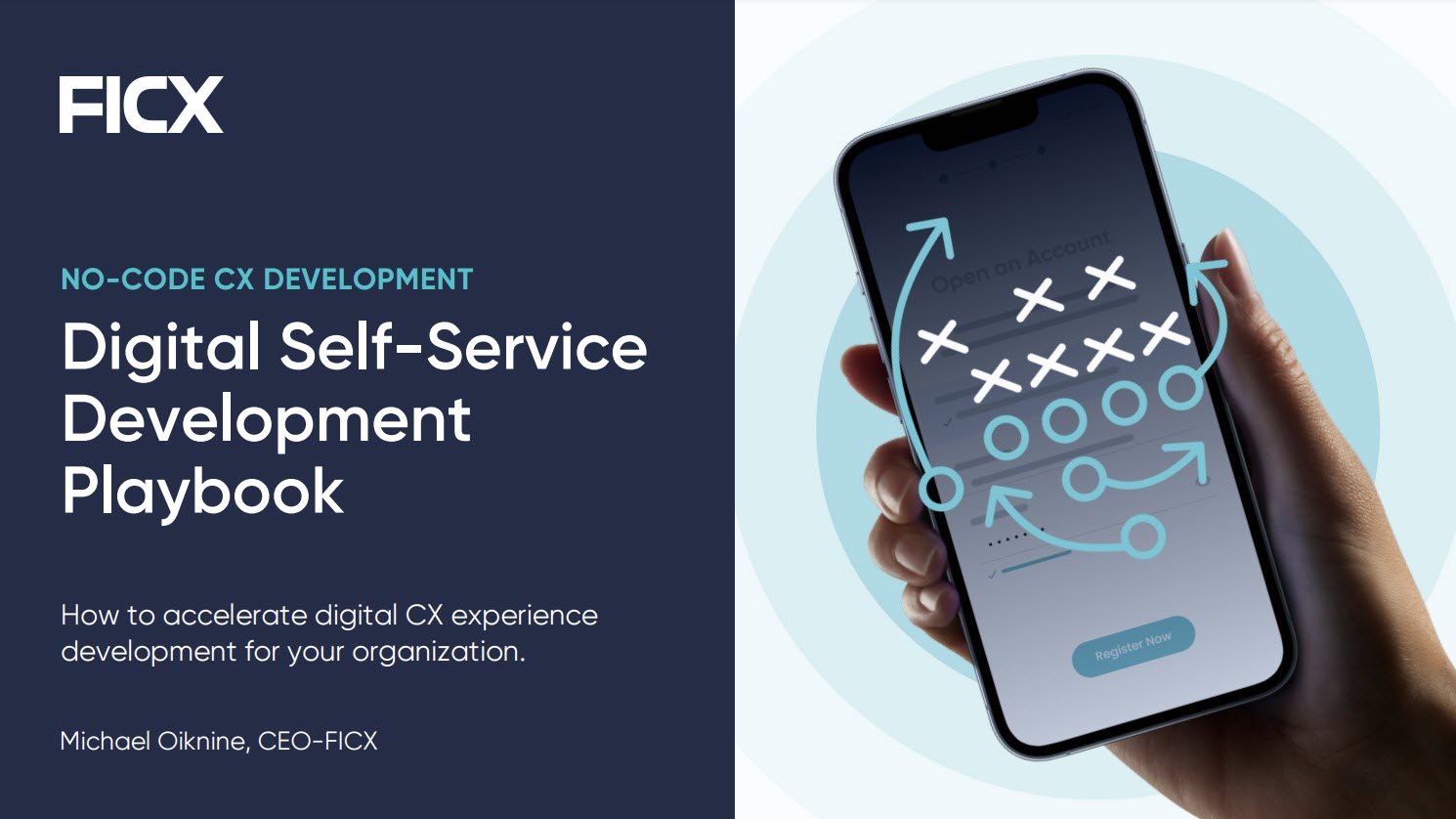Digital CX trends to watch for. As we close out 2021, it’s clear that digital CX initiatives are at the center of many leading organizations’ growth plans. The opportunity to boost revenue, customer service quality, and overall customer experience is simply enormous. Further, digital CX brings outstanding efficiencies that appeal to any organization struggling with service and sales costs.
In our work with many of the world’s leading companies, we have a great vantage point to understand the key themes and initiatives that companies expect to pursue in the months ahead. This post will outline some of the significant digital CX trends we believe will be driving forces in 2022.
Digital CX Automation for Customer Self-Service
Self-service is perhaps the most critical trend in digital CX today. It reduces costs, cuts time-to-resolution of customer issues, and, especially for Millennials and GenZ, is fast becoming the preferred way to interact with companies. As everyone becomes more comfortable with digital experience, the trend toward self-service will continue.
Today, we see the changes as leading banks, insurance companies, and other established institutions replace paper- and pdf-based processes with digital forms. When constructed properly, digital forms cut timelines, reduce costs, promote more consistent and accurate data, and enhance record-keeping. Many companies digitized a handful of their most popular processes a few years ago. In 2022, the focus will be on digitizing the entire panoply of customer processes. An insurance company, for example, might have dozens of claims processes’ for different types of insurance. The focus in 2022 will be to digitize many processes, not just a handful of the most commonly used.
It’s not that the companies weren’t interested in digitizing all of their processes in the past; instead, it is that technology is helping businesses tackle more projects more quickly and at a significantly lower cost. On that more later in this post.
Self-service is also valuable because it is often easier for customers to accomplish everyday tasks independently versus relaying information to a phone agent or in-store representative. After all, who among us has not felt a little frustration when asked to spell every word in our postal address or to repeat our phone numbers because we say them too fast for a two-finger typist?
Omnichannel Digital CX Execution
The future is customer service automation – giving customers more control to manage their own experiences independently. In an omnichannel system, customer service or sales processes can be accessed 24/7. The smartphone becomes a key touchstone in any comprehensive customer experience automation and management program.
Wise CX leaders look to 2022 to enable the customer to achieve the best possible outcomes in the shortest time. An effective omnichannel solution necessitates automating customer processes and delivering a consistent experience in every channel. The ability to create and implement an intuitive omnichannel workflow enables customers to complete more activities in self-service!
In 2022, more companies will ensure that customers see the same process and workflow regardless of how they interact with a company. They will also ensure that the customer can start a process in one channel and complete it in another without retracing steps. Digital CX will be the means through which companies make their claims of omnichannel experience real for every customer.
AI-Powered Digital Experiences
AI dramatically improves customer interest and satisfaction with tools like chatbots and automated assistants; it’s one of the most transformational digital customer experience trends. Where RPA and BPA experiences used to be primitive, rigid, and almost universally disappointing, AI delivers rich and satisfying outputs and interactions. Some of the best examples are in the banking sector. Mobile virtual agents answer highly complex questions quickly. Customers never need to reach out to a contact center.
Personalized Digital Experiences
Customer expectations for digital experiences are constantly increasing. What were good user experiences a few years ago won’t satisfy today. A prime example of this digital CX trend is in personalization. It exasperates customers to have to input content that the company already has. Two-way integrations with a company’s backend sources of customer truth — CRM, account management, marketing automation, and other systems – enable customized digital experiences tailored to specific customer needs, interests, and behaviors. They provide outstanding examples of digital transformation. The last mile customer layer can also be a conduit for sharing information across multiple internal platforms that may not yet be integrated.
Digital CX Integration in Contact Center Workflows
Any company would be delighted to reduce the cost of their contact center services while maintaining the level of customer service they deliver. That’s the holy grail of customer relationship optimization. Digital CX is critical to such efforts. Some of the most popular digital contact center initiatives for 2022 will include:
- Widespread visual IVR adoption for call diversion: There are enormous cost advantages for customer self-service versus live agent connections. Visual IVR is proving an excellent strategy for last-minute call diversion. Offering a visual IVR digital customer experience to address basic questions cuts wait times, increases FCR, and augments overall customer satisfaction. Visual IVR also has benefits for employee experience. Most call centers report that the most common questions don’t require human contact; answering “what’s my balance?” is not what an engaged agent wants to be doing all day. By diverting such questions with visual IVR, agents can spend more time with interesting and fulfilling high-value interactions.
- More video chat and co-browsing: The adage says that a picture is worth a thousand words, but that probably underestimates the power of video during many contact center interactions. Face-to-face video creates a more meaningful and personal experience, and evidence suggests that seeing an agent or seller boosts conversion and compliance rates. Co-browsing helps an agent guide customers through stressful and complex steps in the customer journey. Outbound sales teams know that when they can enable a customer to complete steps while engaged in voice commerce, process abandonment plummets, as does time-to-close. Co-browsing enables representatives to walk people through processes for maximum compliance.
- Real-time document sharing: Now, here’s a CX trend we can all feel great about. Historically, many processes in banking, lending, healthcare, insurance, telecom, and other categories have required customers to fill out emailed forms and return them. Sending and receiving emails adds significant friction to the customer journey. By texting links to e-signable documents in real-time, an agent can boost conversion rates and cut hours or days from processes.
Low-Code Digital CX Development
While digital CX has transformative effects on customer experience, many companies struggle to deliver last-mile digital customer experiences because they lack sufficient tech resources. It’s an area where many companies find their digital strategy well ahead of their ability to execute against it. This development gap hinders efforts to meet customer expectations, enhance customer acquisition, optimize customer retention, and ultimately deliver the coveted great customer experience every day.
Fortunately, new technology platforms offer a simpler way to execute on holistic CX strategy and inviting customer touchpoints. These new customer experience development platforms provide a unified suite of collaboration capabilities and low-code building tools that allow you to address any consumer process pain point quickly. Low-code toolsets empower business leaders to exceed consumer expectations and drive maximum customer value.
Low-code enables businesses to create powerful, capability-packed experiences in specially designed, visually-driven platforms. Great low-code CX automation platforms offer five core sets of customer relationship management capabilities:
- Architect an Experience: It’s essential to outline all of the elements of an experience and how it impacts the customer interaction and the organization. Additionally, the most robust toolsets also incorporate real-time analytics to analyze the experience and pinpoint optimization opportunities.
- Build an Experience: This is the most “telegraphic” area of a low-code platform because the platform operators create customer-facing elements like forms.
- Integrate with Existing Systems: The way a customer interacts with an experience is the proverbial tip of the iceberg. The company’s customer data information is as important as building a pleasant interface. A big part of this is to connect the new last-mile experience with the existing processes and platforms a company uses to conduct business.
- Deliver Across Touchpoints Customers want to access an experience on their terms. This is the central challenge for meeting customer expectations in 2022 and beyond. They want to engage with a process whenever and wherever they want, often across multiple channels. A low-code digital experience platform works best when its experiences capability is interoperable, delivering an omnichannel customer experience.
- Utilize Analytics and Optimization: Once an experience goes live, collecting and interpreting in-market data affords unique opportunities to gauge performance and identify ways to optimize. Analytics enable continuous improvement – an essential element of a robust customer experience strategy.
Conclusion
Of all of the digital cx trends we’ve seen in past years, one truth is undeniable. Every leading services company is racing to deliver more powerful customer experiences that improve revenue, boost profit, and improve satisfaction.
New low-code digital CX platforms like CallVu are helping companies optimize sales and service experiences by automating processes, clearing bottlenecks, and empowering customer-facing teams to be more productive in improving user experience. By deploying the Callvu Low-Code Digital CX Platform, you can use the powerful workflow and analytics suites to automate and digitize any digital customer interaction without taxing tech resources. From there, you can deploy it across multiple channels, including:
- Web
- App
- Chatbot
- IVR
- Call Center
- In-Store/In-Branch
With the Callvu platform tool, business users can deliver customers a consistent, seamless digital experience on the web, in an app, in the contact center or in brick and mortar. Employee and customer feedback on Callvu experiences is universally positive. Visit our homepage or request a demo now.




